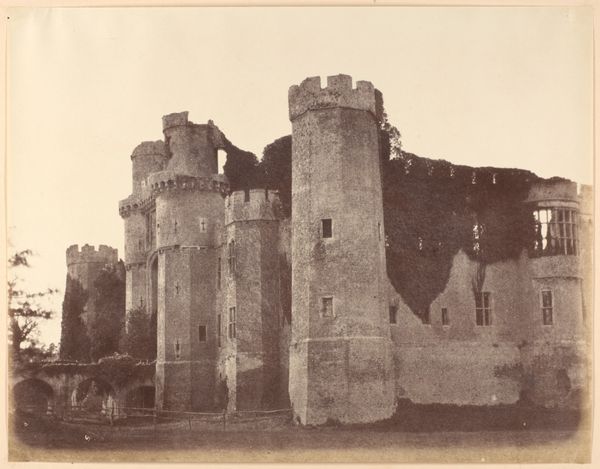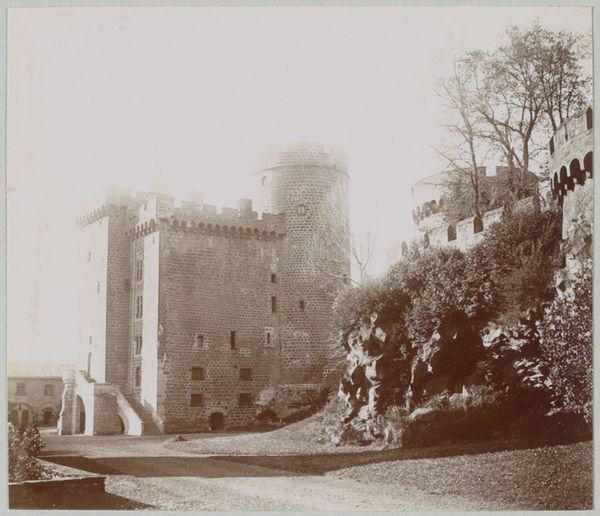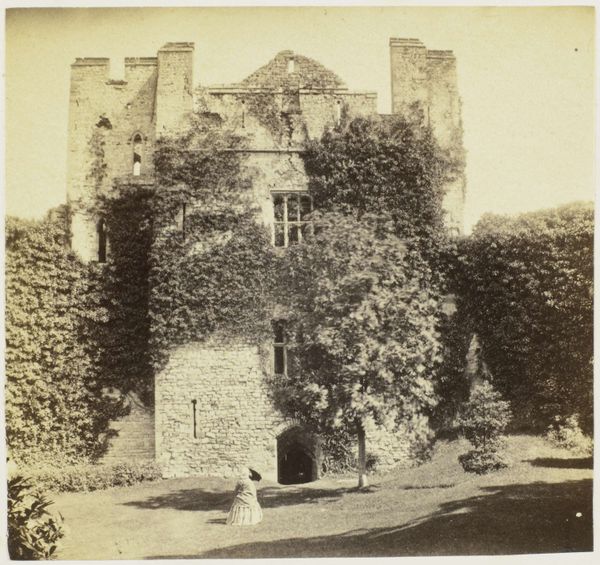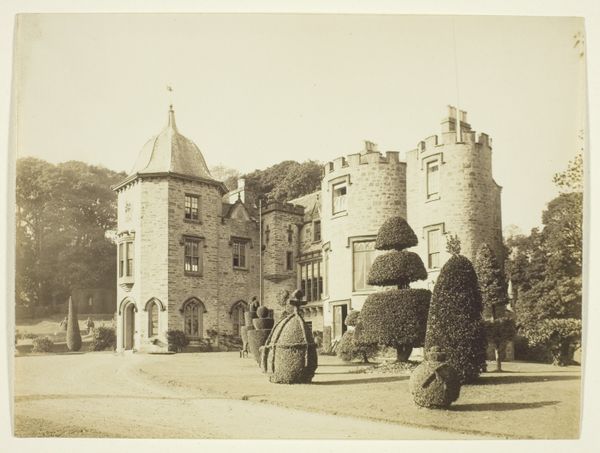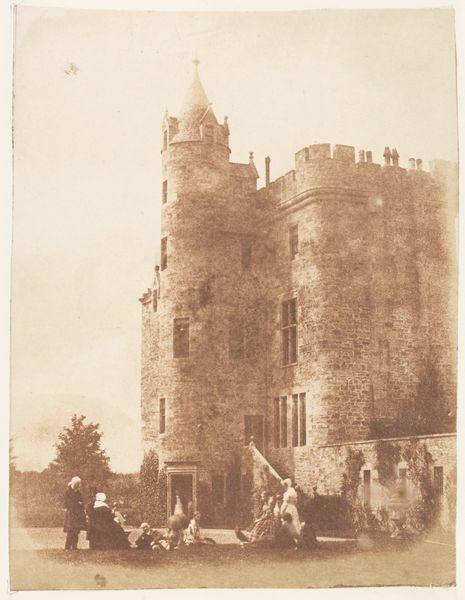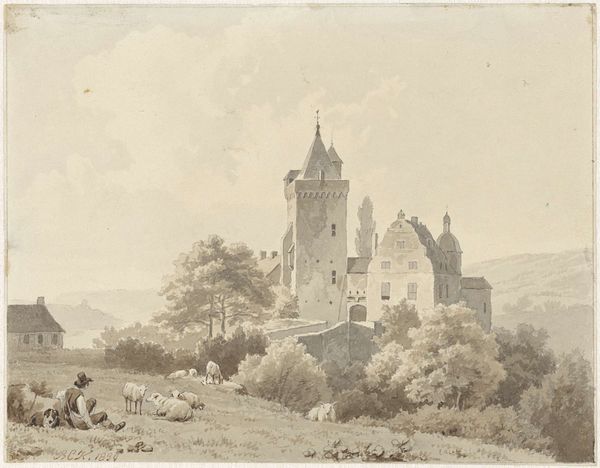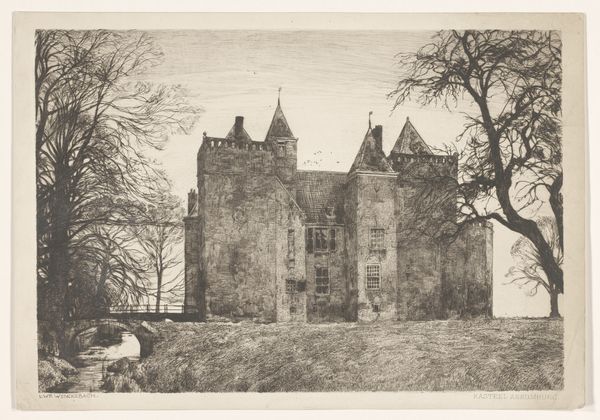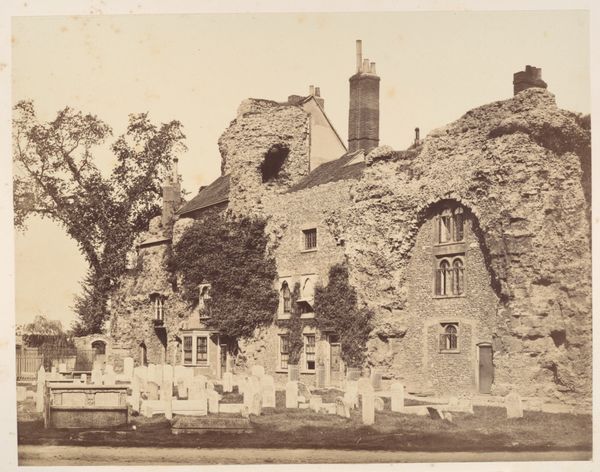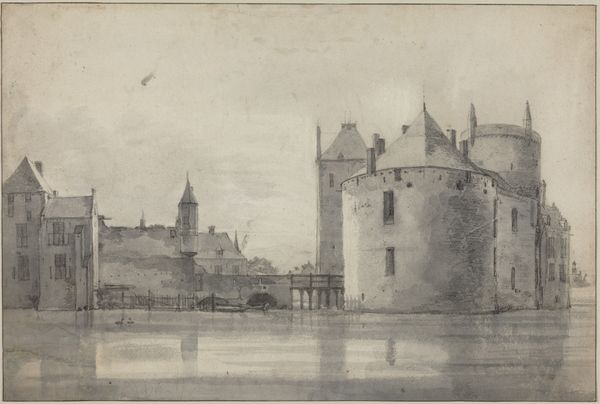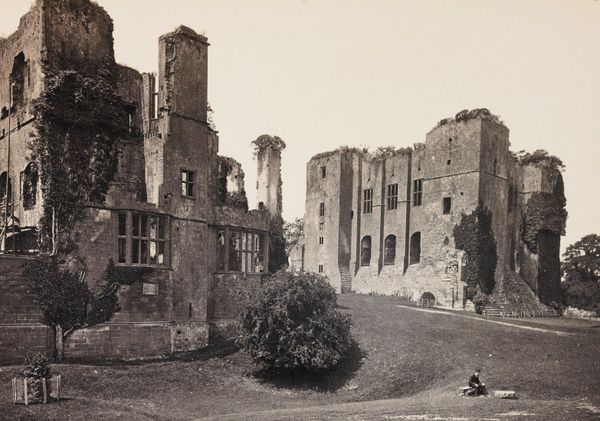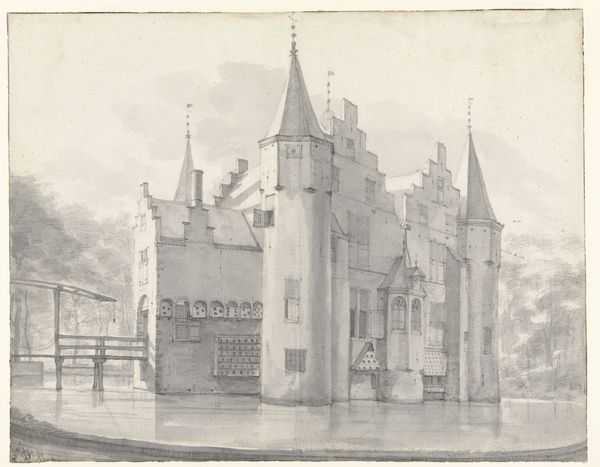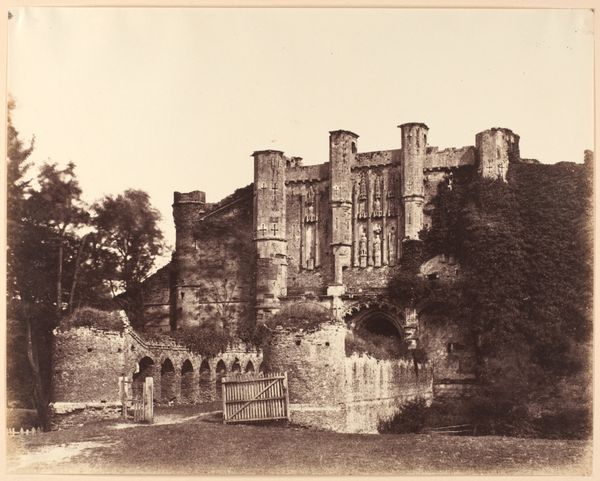
Dimensions: height 96 mm, width 144 mm
Copyright: Rijks Museum: Open Domain
Editor: This is a gelatin silver print, “Kasteelruïne Löwenburg in Bergpark Wilhelmshöhe”, by Johan Nöhring, taken sometime between 1870 and 1890. There's something melancholic about the ruined castle, and how the image seems to emphasize its crumbling structure. What's your interpretation? Curator: Well, consider the late 19th century context. Romanticism was in full swing. What better way to evoke feelings of nostalgia and the sublime than with a "ruin?" Though, a key historical note – Löwenburg wasn’t a true ruin, but intentionally constructed to look like one! It reflects the desires of wealthy elites to stage history and landscape, creating artificial "ancient" settings. Editor: So, it’s performative? Was the ruin staged specifically for photographs like this one? Curator: The photography played a significant role. Think about the rise of tourism at this time. Images like these, widely distributed, would promote Löwenburg as a destination, shaping its cultural value and drawing visitors eager to experience this staged history. It’s not just about the artist; it’s about how the image functions within broader systems of power and spectacle. Do you think the staging affects how we understand its "authenticity" today? Editor: I guess I hadn't thought about the power dynamics at play. I was drawn to the image's aesthetics but ignored its socio-political context. Curator: Exactly. Now, when you look at it, do you still feel that melancholic mood or something else? Editor: It's now more about a curated experience than just the emotional response to the ruin itself. That’s quite a perspective shift! Curator: And that’s why art history is never just about art itself! Editor: I'll certainly view historical landscape photography through a different lens from now on. Thanks!
Comments
No comments
Be the first to comment and join the conversation on the ultimate creative platform.
